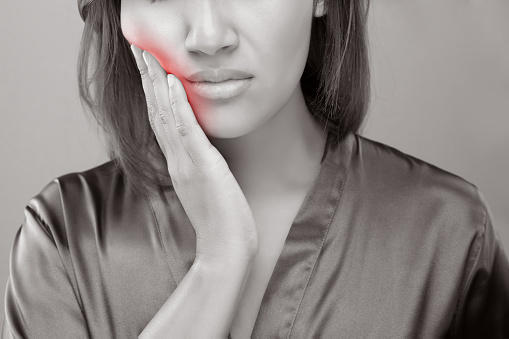
Cold weather is the bane of existence for many people. With cold weather comes more time indoors, more chances to get sick, and even jaw pain. It may seem odd that weather can affect your jaw, but it can.
Your jaw pain from cold weather may be a sign of a condition known as temporomandibular disorder (TMD). It’s important to note that sometimes TMD is referred to as TMJ.
TMD or TMJ is a jaw condition that can cause extreme pain. The pain from TMD is often located right below the cheekbone. This area is where your lower jaw connects to your skull. In order for you to be able to move your jaw, there is a muscle located here. This muscle can be put under a lot of stress, and the stress will cause the muscle to become fatigued.
To identify whether or not you are at risk for TMD, you can see if there are any other signs of it in your daily life. Many sufferers of TMD grind their teeth during the day or at night while sleeping. If you aren’t sure whether you grind your teeth at night or not, you can check by doing a quick evaluation in the morning. When you wake up, check to see if there is any soreness in your jaw. If there is, chances are you grind your teeth at night.
Other symptoms of TMD include ear pain and ear ringing. These often get confused with having an earache, but it could be a sign of pretty serious TMD. Usually, ear pain is coupled with other symptoms like soreness in the jaw and facial inflammation, so check to see if you have those as well. We can help you identify if you are at risk for TMD. Schedule an appointment, and we’ll help you figure it out.
